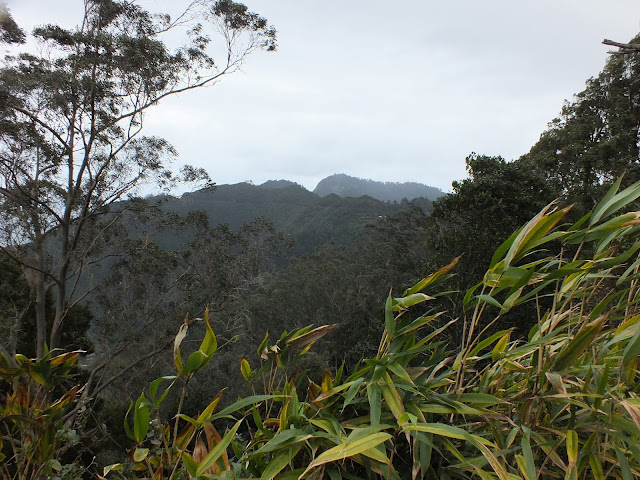Just 3.5hours flying time from Bristol but a world away in habitats and scenery.
A result of volcanic activity the archipelago consists of Madeira, The Desertas island (a national park with restricted access) and the Savage island (a bird reserve totally off limits).
The highest point is Pico Ruivo at 1826m. A moderate climate where summer temperatures average 25'c and the winter is mild at around 17-19'c at lower elevations with snow on the mountains for a few days each year; the weather we experienced was mixed with every season experienced from SNOW on the mountains to gales and hot sunshine.
There are a number of endemic land bird species on the island, and although I visited over 20 years ago I never really got to grips with them, so this trip they were firmly in my sights.
I booked a half day trip with Madeira Wind Birds, run by Hugo and Catarina two local naturalists. They made light work of finding the target species kicking off with:
Trocaz Pigeon, Columba trocaz, the resident and endemic pigeon native to the laurel forests, with less than 8000 pairs I was expecting a struggle but as we pulled in to the viewing area on the side of the road there were two courting birds sat on the wall, Catarina said she had never seen the birds so close, of course by the time I got the camera ready they had flown across the valley to some tall trees, bigger than a Wood Pigeon, they are quite distinctive with a broad light band across the tail.
 |
| my attempt |
Next was Spectacled Warbler, Sylvia conspicillata, like our Whitethroat but with slightly different proportions, and with a prominent eye ring the adult male we saw was stunning one of the early breeders on the island this one was far from shy as it belted out its song.
Our next target was a little gem, one that we get excited about here especially locally, a Firecrest, in this case the Maderian Firecrest, Regulus madeirensis, very similar to our own bird but with more black in the wing and less prominent supercilium, just like all "crests" very busy very fast but in numbers, at one point four in the same bush alas too fast for my camera.
 |
| (Wikipedia free to use and share) |
The last endemic land bird to find was Berthelots Pipit, Anthus berthelotti, the only breeding pipit on Madeira, small but appearing long legged and the legs placed far back, the bill was quite distinctive as was the pale grey/white plumage tones, the bird lives on the windswept sparsely vegetated areas of the island and is not shy.
Being an island many of the bird species are subspecies because they are different in some way, one particular ssp was the Chaffinch, maderensis which is quite a stunner, interestingly we also had the first record of "European" Chaffinch in with the flock of locals;
here's a list of the species and subspecies I saw.
Little Egret
Sparrowhawk ssp granti
Buzzard, ssp harterti
Moorhen
Coot
Turnstone
Black headed Gull
Yellow Legged Gull ssp atlantis
Yellow Legged Gull ssp atlantis
Rock Dove ( genuine ones)
Trocaz Pigeon
Plain Swift
Berthelots Pipit
Grey Wagtail ssp schmitzi
Robin
Blackbird ssp cabrerae
Spectacled Warbler ssp bella
Blackcap ssp heineken
Madeiran Firecrest
Chaffinch
Chaffinch ssp maderensis
Canary
Goldfinch ssp parva
Although we went Whale and Dolphin watching one day we didn't see any neither were there any good seabirds present, its too early with May being a good time to see Zinos Petrel.
Other wildlife included the endemic Madeiran Wall Lizard, and a range of butterflies, with Clouded Yellow, Small White, Long tailed Blue, Langs short tailed Blue and Monarch ( which is a resident breeder now)












No comments:
Post a Comment